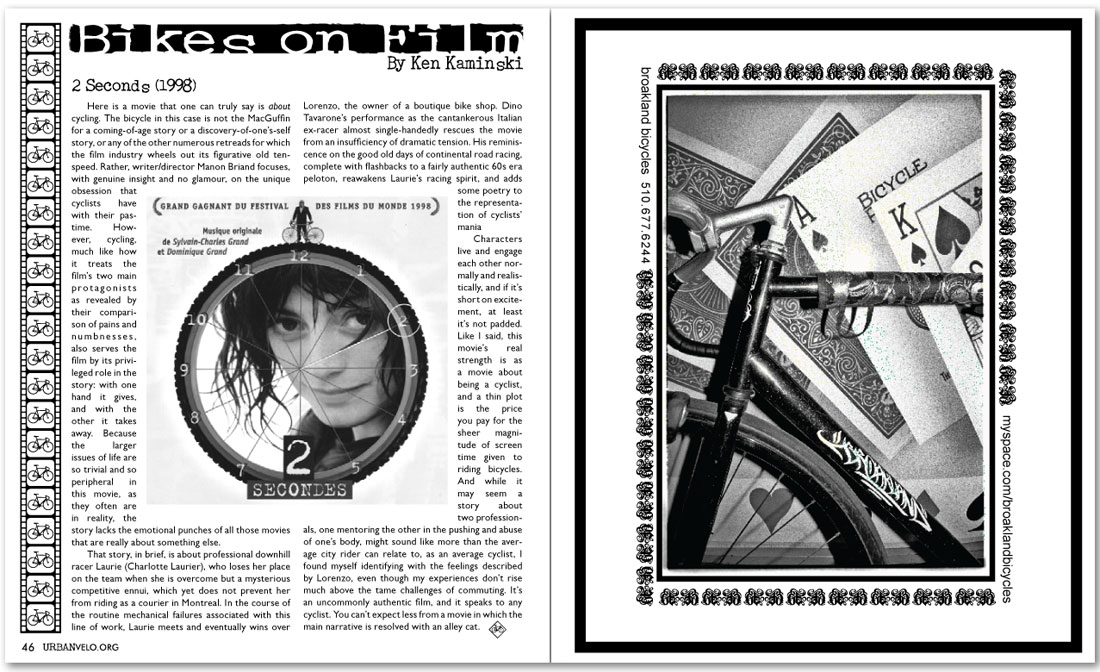

|
|||
Bikes on FilmBy Ken Kaminski2 Seconds (1998) That story, in brief, is about professional downhill racer Laurie (Charlotte Laurier), who loses her place on the team when she is overcome but a mysterious competitive ennui, which yet does not prevent her from riding as a courier in Montreal. In the course of the routine mechanical failures associated with this line of work, Laurie meets and eventually wins over Lorenzo, the owner of a boutique bike shop. Dino Tavarone’s performance as the cantankerous Italian ex-racer almost single-handedly rescues the movie from an insufficiency of dramatic tension. His reminiscence on the good old days of continental road racing, complete with flashbacks to a fairly authentic 60s era peloton, reawakens Laurie’s racing spirit, and adds some poetry to the representation of cyclists’ mania. Characters live and engage each other normally and realistically, and if it’s short on excitement, at least it’s not padded. Like I said, this movie’s real strength is as a movie about being a cyclist, and a thin plot is the price you pay for the sheer magnitude of screen time given to riding bicycles. And while it may seem a story about two professionals, one mentoring the other in the pushing and abuse of one’s body, might sound like more than the average city rider can relate to, as an average cyclist, I found myself identifying with the feelings described by Lorenzo, even though my experiences don’t rise much above the tame challenges of commuting. It’s an uncommonly authentic film, and it speaks to any cyclist. You can’t expect less from a movie in which the main narrative is resolved with an alley cat. |
|
|